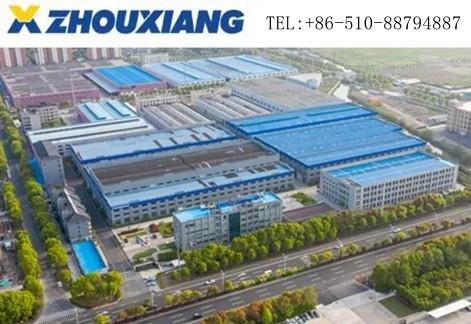
More News
- Intelligent Welding Robots Drive the Upgrade of Manufacturing in India
- Our Welding Machine Has Been Installed and Tested in Sri Lanka
- A vietnam agent ordered two sets of double column welding machine SXBH20 from our company.
- Installation under epidemic situation
- One customer from Sultanate of Oman bought our manipulator and rotator for welding large cylinder.
We know that according to chemical composition, steel can be divided into two categories: Carbon steel and alloy steel. Today i will talk about several situations about whether carbon steel can be welded. According to the chemical composition of steel, it can be divided into two categories: Carbon steel and alloy steel.
Carbon steel is divided into:
①low carbon steel, the carbon content is less than 0.25%;
②medium carbon steel, the carbon content is 0.25%~0.6%;
③high carbon steel, the carbon content is greater than 0.6%.
Low carbon steel (mild steel) is carbon steel with a carbon content of less than 0.25%. Because of its low strength, low hardness and softness, it is also called mild steel. It includes most ordinary carbon structural steels and some high-quality carbon structural steels, most of which are used for engineering structural parts without heat treatment, and some are used for mechanical parts requiring wear resistance after carburizing and other heat treatments.
Medium carbon steel has good thermal processing and cutting performance, but poor welding performance. The strength and hardness are higher than low carbon steel, but the plasticity and toughness are lower than low carbon steel. Cold-rolled and cold-drawn materials can be used directly without heat treatment, or after heat treatment. Medium carbon steel after quenching and tempering has good comprehensive mechanical properties. The highest hardness that can be achieved is about HRC55 (HB538), and σb is 600-1100MPa. Therefore, in various uses of medium strength level, medium carbon steel is the most widely used. In addition to being used as building materials, it is also widely used in the manufacture of various mechanical parts.
High carbon steel (high carbon steel) is often called tool steel, the carbon content is from 0.60% to 1.70%, it can be quenched and tempered, and its welding performance is very poor. Hammers, crowbars, etc. Are made of steel with a carbon content of 0.75%; cutting tools such as drills, taps and reamers are made of steel with a carbon content of 0.90% to 1.00%.
Comparison of welding properties of low carbon steel and high carbon steel
The quality of steel welding performance mainly depends on its chemical composition. Among them, the carbon element has the greatest influence, that is to say, the amount of carbon in the metal determines its weldability. Most of the other alloying elements in steel are also unfavorable to welding, but generally to a much lesser extent than carbon.
Generally, low-carbon steel has good weldability, and generally no special process measures are required. Only when low temperature, thick plate or high requirements are required, basic electrode welding and proper preheating are required. When the content of carbon and sulfur in low carbon steel is above the upper limit, in addition to requiring the use of high-quality low-hydrogen electrodes, taking preheating and postheating measures, the groove form should be reasonably selected and the fusion ratio should be reduced to prevent hot cracks .
Medium carbon steel has a tendency of cold cracking during welding. The higher the carbon content, the greater the tendency of hardening in the heat-affected zone, the greater the tendency of cold cracking, and the worse the weldability. As the carbon content of the base metal increases, the carbon content of the weld metal will also increase accordingly. Coupled with the adverse effects of sulfur, it is easy to form hot cracks in the weld. Therefore, alkaline electrodes with good crack resistance should be used for welding medium carbon steel, and measures such as preheating and postheating should be taken to reduce the tendency of cracks.
When welding high-carbon steel, due to the high carbon content of this steel, a large welding stress will be generated during welding, the hardening and cold cracking tendency of the welding heat-affected zone is relatively large, and the weld is also more prone to hot cracks. High-carbon steel is more likely to produce hot cracks than medium-carbon steel during welding, so this type of steel has the worst weldability, so it is not used in general welding structures, and is only used for repair welding or surfacing welding of castings. After welding, the weldment should be tempered to relieve stress, fix the structure, prevent cracks and improve the performance of the weld.

Zhouxiang Enterprise
Specializing in the production of H-beam light and heavy steel production line, box beam production line, horizontal production line, double-splicing welding and straightening automatic line, all kinds of automated customized assembly line; including CNC flame plasma cutting machine, fiber laser flat cutting machine, laser pipe cutting machine, tube and plate integrated machine, hand-held laser welding machine, H-beam assembling machine, gantry submerged arc welding machine, H-beam straightening machine, shot blasting machine, H-Beam assembly welding and straightening integrated machine, welding special machine, auxiliary machine, rolling machine, profile bending machine, various welding machines, etc,
Made by Zhouxiang, professional quality, high precision, high speed.
Leading technology, stable quality, products sell well at home and abroad.
